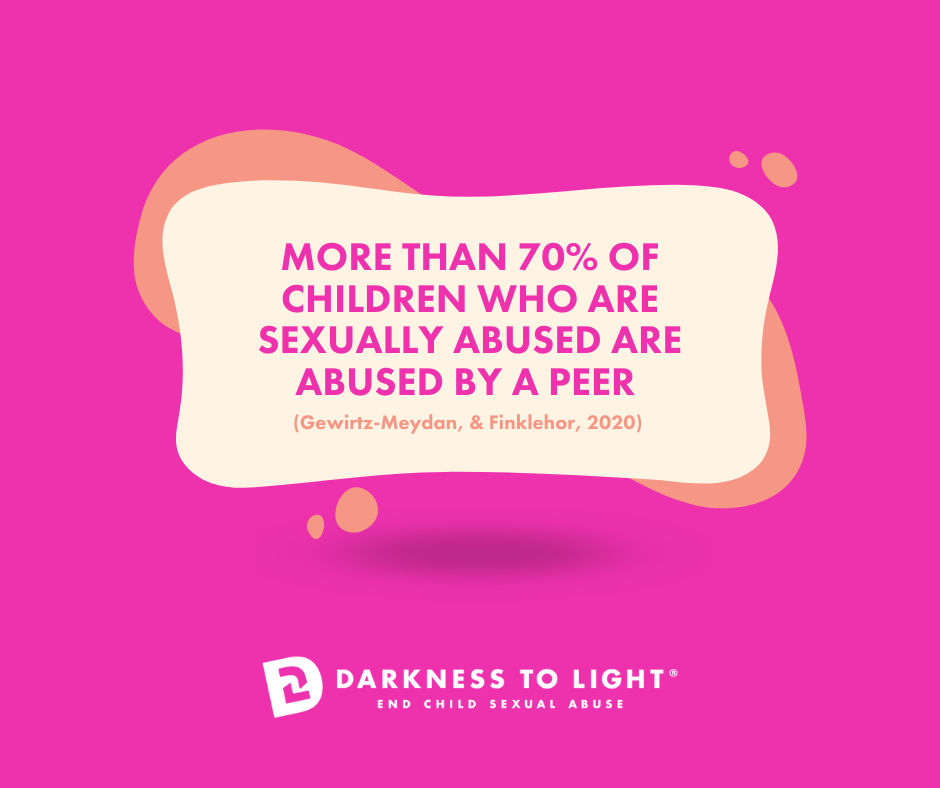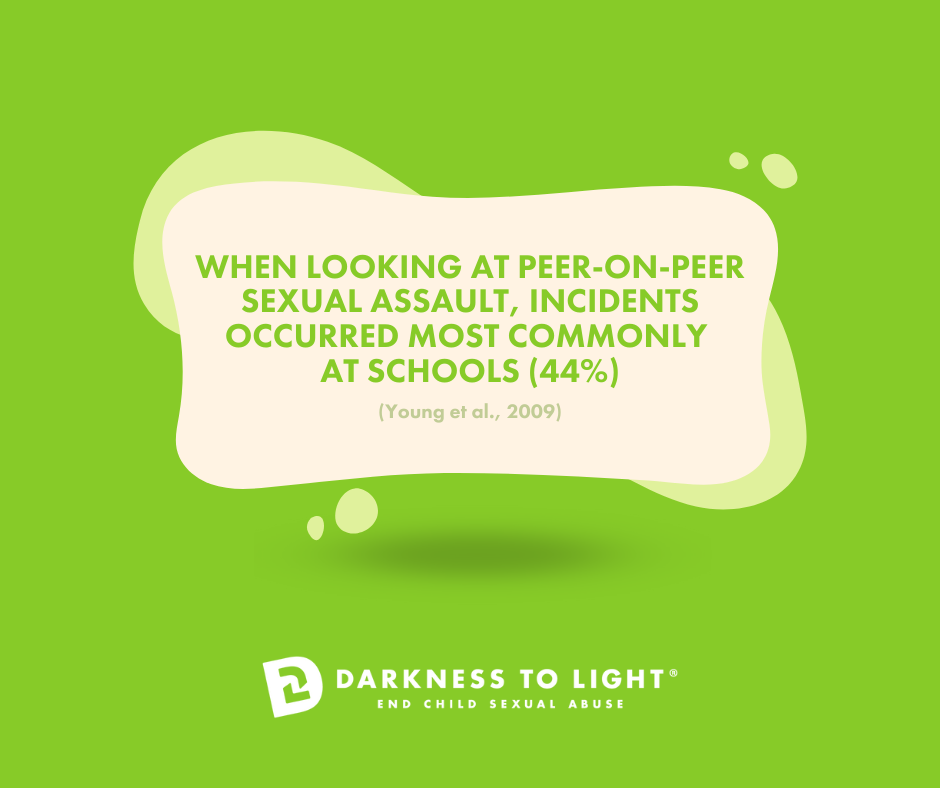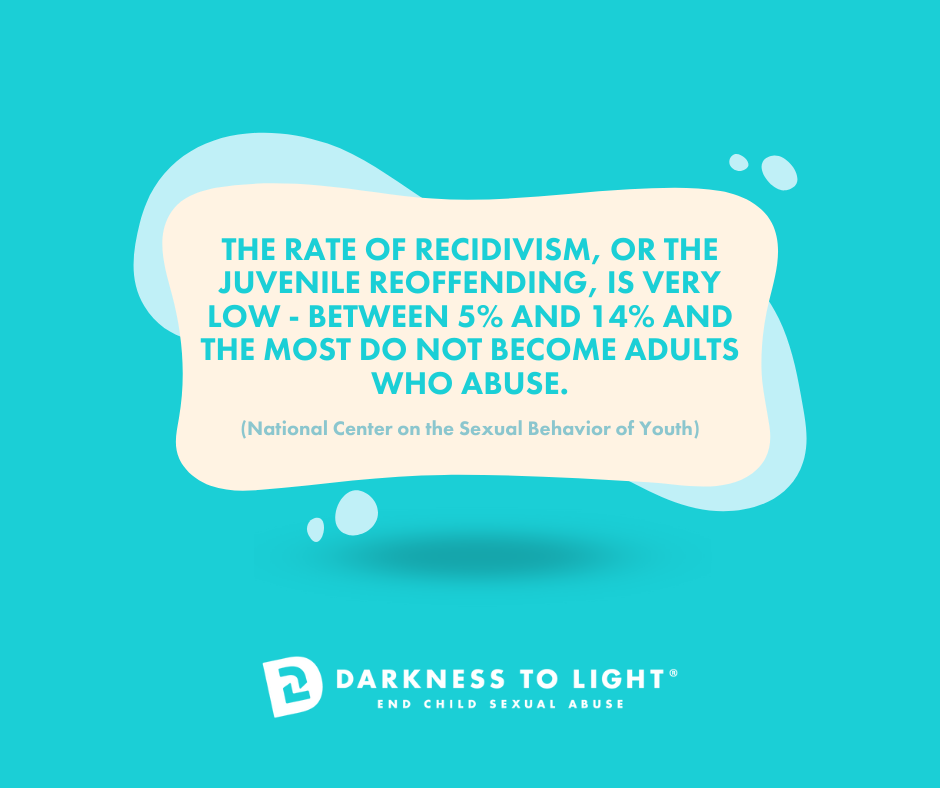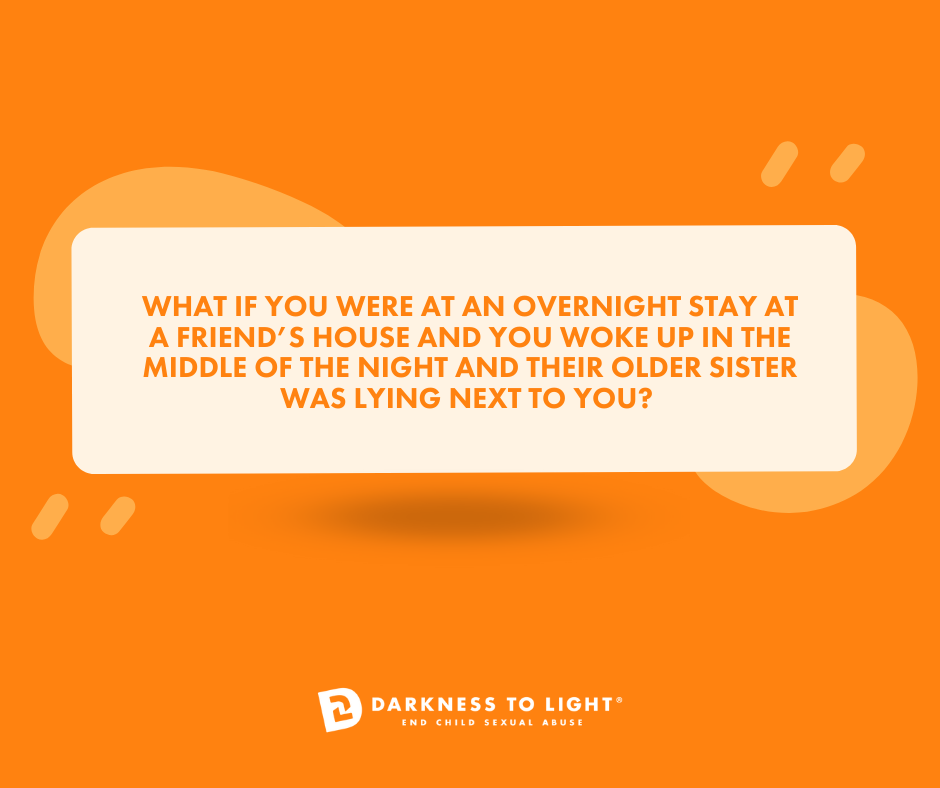The rates of peer-on-peer child sexual abuse have increased over the last decade. What does this tell us?
It tells us that when we are thinking about protecting children, we need to think about situations where children are left with other children, without direct supervision or in unsafe environments. Specifically, as adults we need to think about how we can make bathrooms and locker rooms safer, what protocols we use for children to walk unsupervised in the hallways or between buildings, the policies we enact for cell phone or social media access, and how to scan the environments for hidden and secluded areas.
Learn more about peer-on-peer abuse, including ways to talk to children using the “What If” game below and then join us on September 18 via Zoom for our Honest Conversation webinar!
What is Peer-on-Peer Abuse?
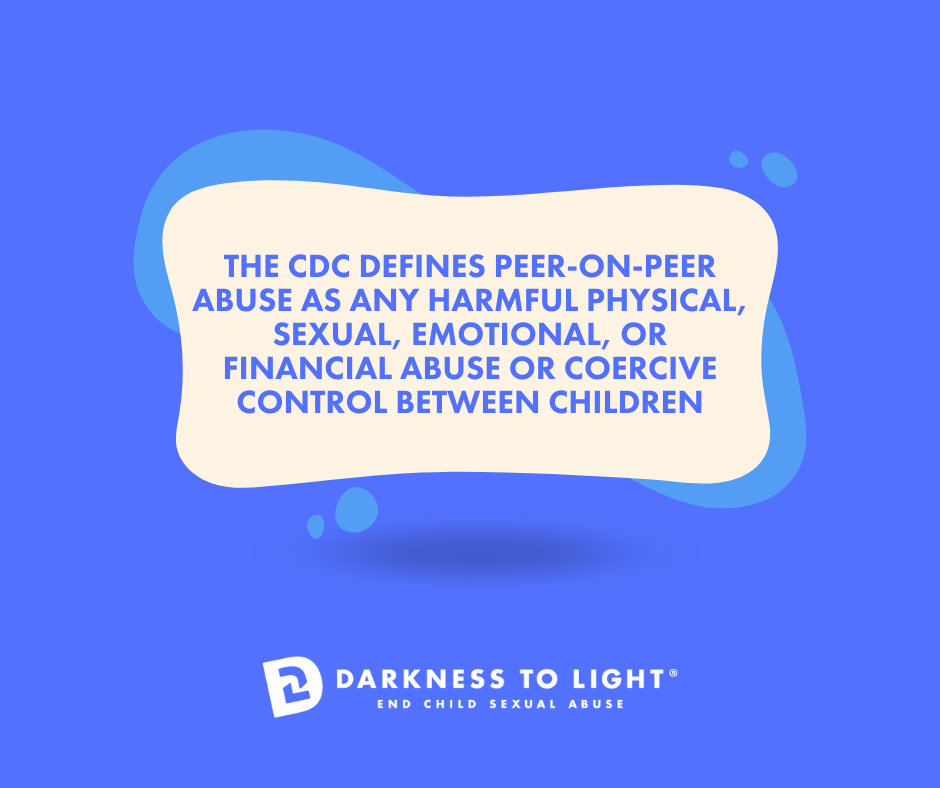
The CDC defines peer-on-peer abuse as any harmful physical, sexual, emotional, or financial abuse or coercive control between children.
This includes sexual acts between minors, such as physical sex acts, touching, viewing or sharing pornography, sexting, filming, or photography of a sexual nature. Peer-to-peer abuse can also include bullying, which is defined as any unwanted, repeated aggressive behavior by another youth or group of youths who are not siblings or current dating partners. Bullying can involve an observed or perceived power imbalance and may include verbal and physical abuse, systematic social exclusion, name calling, shaming, rejection, withholding love, and threatening.
Peer-on-Peer Statistics:
- More than 70% of children who are sexually abused are abused by a peer (Gewirtz-Meydan, & Finklehor, 2020).
- When looking at peer-on-peer sexual assault, incidents occurred most commonly at schools (44%) (Young et al., 2009).
- The rate of recidivism, or the juvenile reoffending, is very low – between 5% and 14% and the most do not become adults who abuse. (National Center on the Sexual Behavior of Youth)
Honest Conversation Webinar:
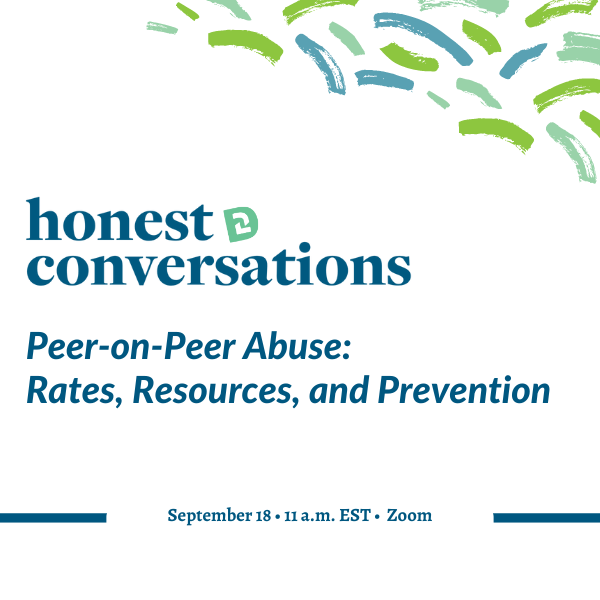
Join us on Wednesday, September 18, for a special discussion on navigating peer-on-peer abuse throughout the school year and beyond.
During this Honest Conversation, we will be joined by experts from Thorn, The Moore Center for the Prevention of Child Sexual Abuse, and Stop It Now. Together, we’ll explore valuable resources for online safety, upstander interventions, recognizing normal versus concerning behavior, and strategies to reduce the risk of unsafe situations between children.
“What If” Game:
The “What If?” Game is a great way to help kids think about possible situations they may face this school year. Thinking through these situations with your children ahead of time increases their agency and empowers them to safely respond. Technology, social media, and advances in AI are all part of your child’s current reality and can appear scary and moving way too fast. With the What If Game, we can shift from a fear-based anxiety-inducing focus, to one where we have open communication and strengthen our relationship with our children.
For the “What If” scenarios below, have your child:
- Think about their immediate safety. If they feel unsafe, encourage them to leave or get help.
- Identify a safe adult they could go to for help or to talk to.
- Discuss what they would do if a person crosses their boundaries.
- Talk about what they can do if the boundary crossing continues.
Be sure to encourage open and honest conversations with your children. Talk to them about the dangers of sexting, the importance of consent, why it is a must to set personal boundaries, and how to handle when others cross those boundaries. Share what you, as the parent or caregiver, would do. Above all, model and talk about what healthy relationships look like for your children.
STOP Framework:
- Some of the What If scenarios may be challenging, so it may help to frame discussions with your children using the STOP plan: Safety first, Tell someone, Openly communicate, Praise their bravery. The STOP approach—Safety, Tell, Open, and Praise—offers a supportive framework that empowers adults to guide children through these complex scenarios with confidence and clarity. By using STOP, you can effectively address What If situations in a way that fosters long-term confidence, open communication, and resilience in both children and adults.
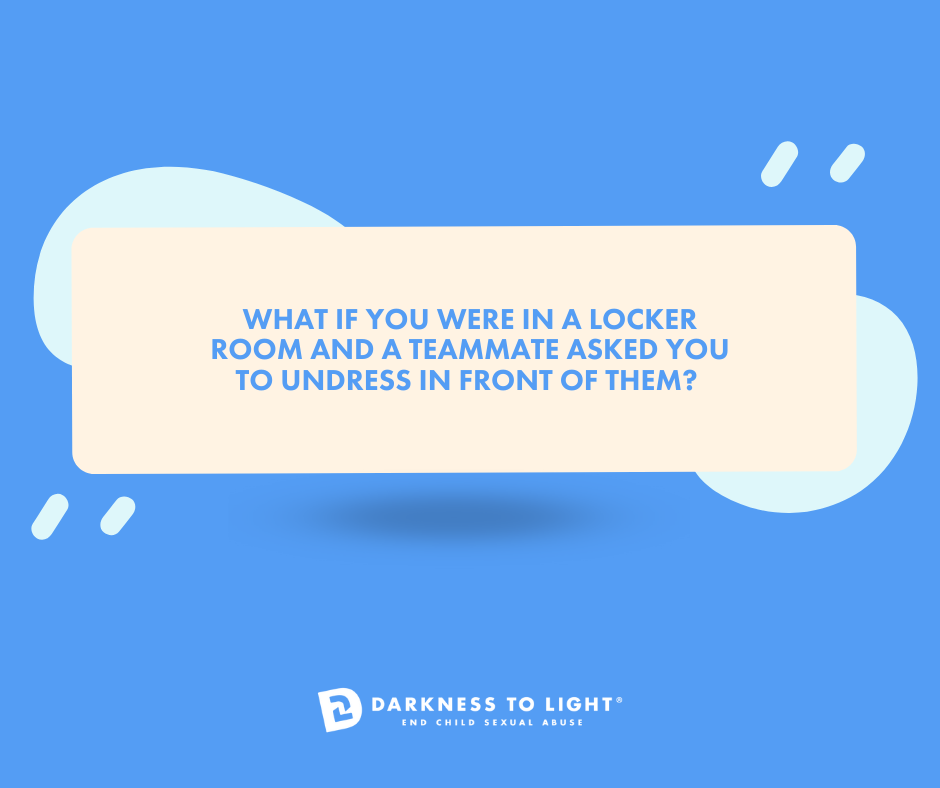
What if you were in a locker room and a teammate asked you to undress in front of them?
Safety: Reassure your child that they have the right to feel safe and comfortable in any situation. If something makes them uncomfortable, it’s okay to say no and remove themselves from the situation.
Tell: Encourage them to tell a safe adult right away, like a coach, teacher, or you as their parent.
Open: Even if you’re unsure, it’s always better to share your feelings through open and honest conversations with someone you trust.
Praise: I’m so proud of you for thinking about how to stay safe and for being brave enough to talk about situations like this. You’re doing a great job setting boundaries.
What if you were at an overnight stay at a friend’s house, and you woke up to their older sister lying next to you?
Safety: Emphasize the importance of trusting instincts and setting clear boundaries.
Tell: A situation like this can be confusing for your child. Encouraging them to come to you will help strengthen their trust in you and build their confidence in trusting their own instincts.
Open: There’s no need to keep something like this a secret—remind them that they can always call you, no matter the time if they want to come home.
Praise: Thank you for telling me. It’s not always easy to know what to do, and I know you do not want anyone to get in “trouble,” but your boundaries and safety are my top priority.
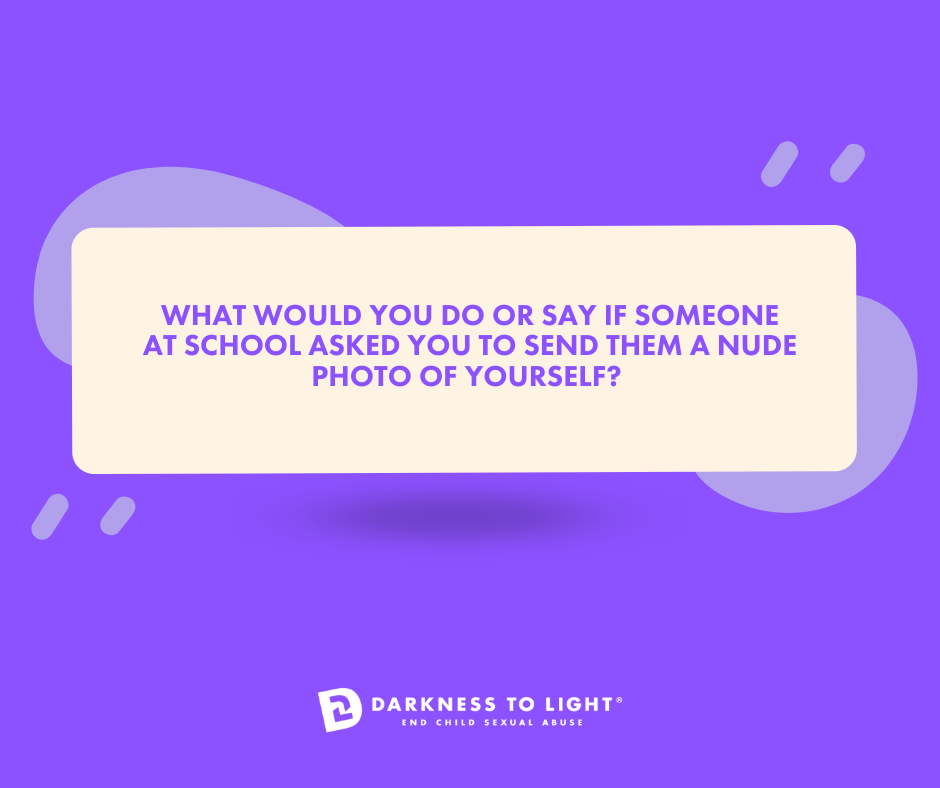
What would you do or say if someone at school asked you to send them a nude photo of yourself?
Safety: It’s important for your child to feel empowered to say no. They should understand that they never have to do something they’re uncomfortable with, even for someone they like.
Tell: Even if it feels embarrassing, it’s really important to let a safe adult know about the situation. This is to protect both you and the person who asked.
Open: Use this as an opportunity to teach them about the dangers of sexting.
Praise: I know there is a lot of pressure to send nude photos, but it is never a good idea. Even if it seems harmless now, it could be shared with others, used to embarrass or bully you, or even fall into the hands of people you don’t know.
What if someone follows you while you are walking to school? What could you do?
Safety: Emphasize practical steps, such as quickly getting to a spot where there are other people, avoiding isolated areas, and, if possible, calling a trusted adult to stay on the phone with.
Tell: Hold space for your child to tell you exactly what happened. Avoid leading questions or making suggestions about what happened.
Open: Keep the conversation calm and reassuring. Validate your child’s feelings after the fact.
Praise: I’m really proud of how you handled this situation, and most importantly, I am happy you are safe.
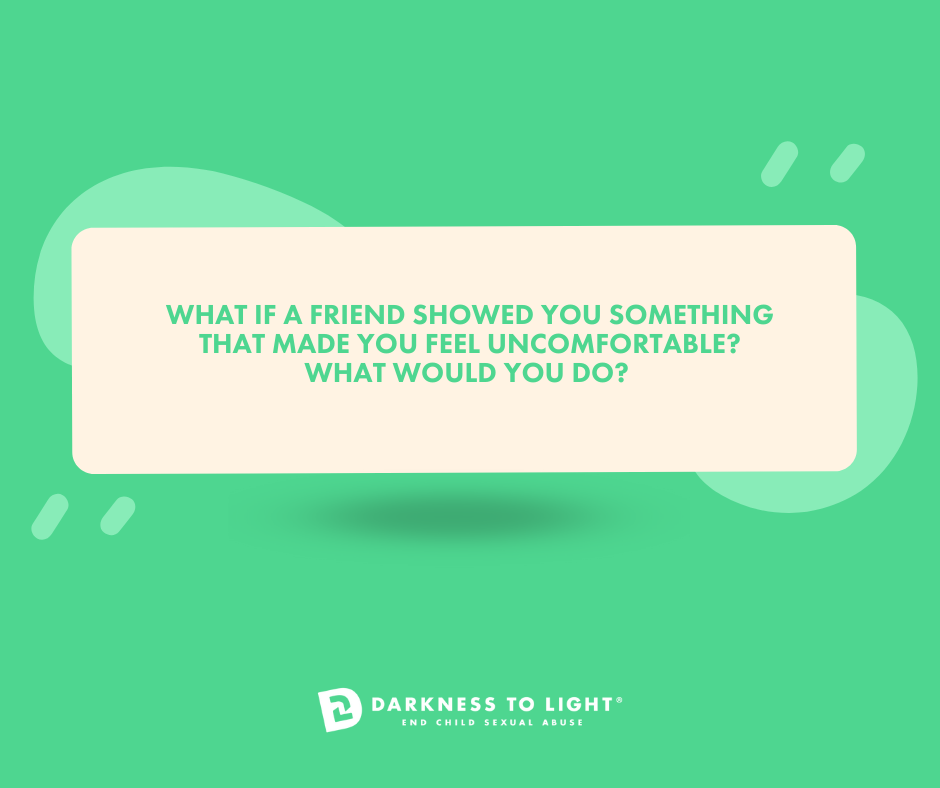
What if a friend showed you something that made you feel uncomfortable? What would you do?
Safety: Remind your child that if something makes them uncomfortable, they have every right to step away from the situation or to say no.
Tell: Ensure that your child knows that sharing their experience with a safe adult, like a parent, teacher, or coach, can help them get support and ensure they’re not dealing with it alone.
Open: Let your child know if they want to talk about it, you are here to listen. You can discuss what made them uncomfortable and explore how to handle similar situations in the future.
Praise: Recognizing your feelings and wanting to talk about them shows strength and maturity. You can come to me any time you feel uncomfortable, no matter the situation.

A friend showed you a partially nude picture someone made with your face on it. What would you do?
Safety: Reassure your child this should never be something they deal with alone.
Tell: Emphasize that by telling a safe adult, measures can be taken to correct this violation. Talk about resources such as Is Your Explicit Content Out There? (missingkids.org) and Take It Down (ncmec.org), as well as call local law enforcement.
Open: Let your child know this is a scary and complicated situation, and you are here to help them navigate through it.
Praise: I’m truly sorry that this has happened to you. You are making the right choice by reporting what you saw, and I commend you for taking that important step.
These responses are designed to reinforce the importance of safety, encourage communication, and build confidence in children to handle difficult situations. They should serve as a foundation for further discussion.
Additional Resources:
Free, confidential and anonymous support — What’s OK? (whatsok.org)
Is Your Explicit Content Out There? (missingkids.org)
About Shore – Shore (shorespace.org.uk)
Deepfake Nudes and Other Trends in Youth Behavior Online in 2023: New Research From Thorn


